Climate Change's Impact on Marine Species and Ecosystems
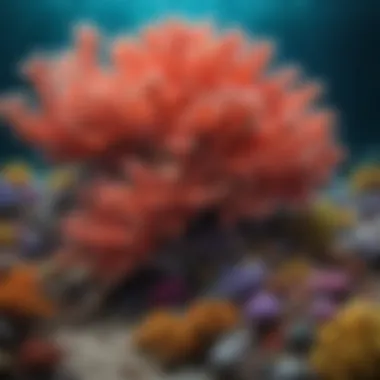

Article Overview
Purpose of the Article
The effects of climate change on marine life are profound and multifaceted. With the ocean serving as a critical component of the Earth’s climate system, its health mirrors and influences broader ecological shifts. This article aims to meticulously underscore how a changing climate is reshaping marine ecosystems. By examining various species and their adaptations, we seek to illuminate the intricate dance between environmental change and marine biology. Our exploration will encompass physiological alterations, behavioral shifts, and ecological consequences, thereby painting a comprehensive picture of the implications for different marine organisms.
Relevance to Multiple Disciplines
Climate change is not relegated to the realm of environmental science alone. The ongoing transformations in marine life touch myriad fields, from biology and ecology to economics and sociology. Understanding these impacts is vital for researchers, conservationists, and policy-makers.
In particular, researchers in marine biology can glean insights into species resilience and adaptation strategies, while economists might explore the repercussions on fisheries and tourism industries. Furthermore, educators can utilize these findings to foster awareness about human interaction with marine environments, promoting a more sustainable future.
Research Background
Historical Context
The relationship between climate and marine ecosystems has evolved dramatically over the past century. As industrialization has soared, so has the concentration of greenhouse gases, triggering notable shifts in global temperatures. Studies, such as those recorded by the Intergovernmental Panel on Climate Change (IPCC), elaborate on historical data that reveals a gradual, yet alarming, rise in sea temperatures. This background sets the stage for understanding current trends.
Key Concepts and Definitions
To delve deeper into the subject, it is imperative to establish key concepts:
- Ecosystem Resilience: The ability of an ecosystem to recover from disturbances, such as temperature changes.
- Niche Adaptation: The process by which an organism adjusts its behavior or physiology to survive in changing habitat conditions.
- Biodiversity: The variety and variability of life forms within a particular habitat or ecosystem.
Understanding these concepts is vital to grasp the full impact of climate change on marine organisms. Each species responds differently, and these nuanced responses affect the overall balance within various marine ecosystems.
Preface to Climate Change and Marine Ecosystems
The significance of examining climate change within the context of marine ecosystems cannot be overstated. As the climate continues to shift, the implications for the ocean's vast and intricate systems become ever clearer. From the depths of the abyss to the shores of our beaches, every aspect of marine life faces unprecedented challenges. This section provides a foundational understanding of climate change's nuances and its consequences for marine life, which will be critical for grasping the intricate details covered further in this article.
Understanding Climate Change
Climate change refers to long-term alterations in temperature, precipitation patterns, and other atmospheric conditions on Earth. The phenomenon consists of natural processes, coupled with anthropogenic influences, leading to an overall increase in global temperatures. Greenhouse gases, like carbon dioxide and methane, accumulate in the atmosphere, resulting in a greenhouse effect that traps heat.
Marine ecosystems are particularly vulnerable to these changes. As temperatures rise, ocean waters warm, and ice caps diminish. When sea temperatures increase, various species, particularly those with narrow temperature tolerances, begin to encounter stress. For instance, certain fish species become less productive under warmer conditions,
"Every living organism has its threshold of resilience. Once surpassed, these species may find themselves in dire straits."
"Every living organism has its threshold of resilience. Once surpassed, these species may find themselves in dire straits."
the repercussions of which echo throughout the food web.
The Role of Marine Ecosystems
Marine ecosystems play an essential role in sustaining life on our planet, acting as natural buffers and regulators. Oceans cover over 70% of the Earth's surface and are home to a diverse array of organisms, from microscopic plankton to large whales. These ecosystems provide invaluable services, such as oxygen production, carbon sequestration, and nutrient cycling.
Particularly, coral reefs, often dubbed the "rainforests of the sea," are hotspots of biodiversity. They sustain numerous marine species and protect coastlines from erosion. However, the delicate balance that maintains these ecosystems is under siege. With increasing temperature and ocean acidification due to elevated carbon levels, corals face bleaching events that not only threaten their survival but also the myriad of species that depend on them for shelter and sustenance.
In summary, understanding climate change and the role of marine ecosystems offers vital insights into the depth of challenges marine life is facing. This knowledge sets the stage for a detailed examination of specific species affected by these significant shifts.
Key Marine Species Affected
The topic of key marine species affected by climate change deserves attention because these organisms serve as vital components of oceanic ecosystems. Their health and existence directly correlate with marine biodiversity, showcasing a delicate balance that influences food web dynamics and, ultimately, human well-being. By understanding the specific species that are struggling in a warming world, researchers can devise strategies to mitigate adverse effects, improving conservation efforts and preserving ocean resources.
Coral Reefs and their Inhabitants
Coral reefs can be likened to the rainforests of the sea. They are bustling, vibrant ecosystems housing thousands of species that rely on them for shelter and nourishment. But with climate change leading to rising sea temperatures, these critical habitats are under siege.
Coral bleaching occurs when corals expel the symbiotic algae living within their tissues due to stress from heat. This process robs the coral of its color and significantly diminishes its ability to thrive. As conditions worsen, entire reef systems can collapse, leading to a drastic reduction in biodiversity. The ramifications of this loss extend beyond the marine realm, impacting fisheries and tourism that depend heavily on these ecosystems.
"Coral reefs support 25% of all marine species, underlining the importance of their preservation."
"Coral reefs support 25% of all marine species, underlining the importance of their preservation."
Fish Populations
Fish populations are undergoing significant shifts in response to climate change. As ocean temperatures rise, many fish species are forced to migrate toward cooler waters, often leading to alterations in local fish communities. Species such as cod and herring are increasingly being found in areas they once avoided, disrupting traditional fishing zones.
Moreover, changes in breeding grounds and food availability can negatively impact fish reproduction and survival rates. For instance, herring rely on specific water temperatures to spawn. If those conditions no longer exist, the repercussions could be severe, threatening not only fish populations but also the livelihoods of communities that depend on them for sustenance.
Marine Mammals
Marine mammals, including whales, seals, and dolphins, are feeling the heat too. Many species are facing a decline in prey availability which can be attributed to climate-induced changes in their environments. As ice caps melt and habitat configurations change, their hunting grounds erode, leading to potential starvation.
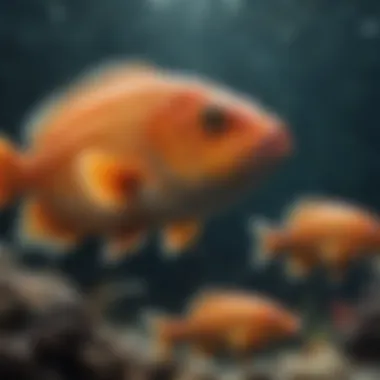
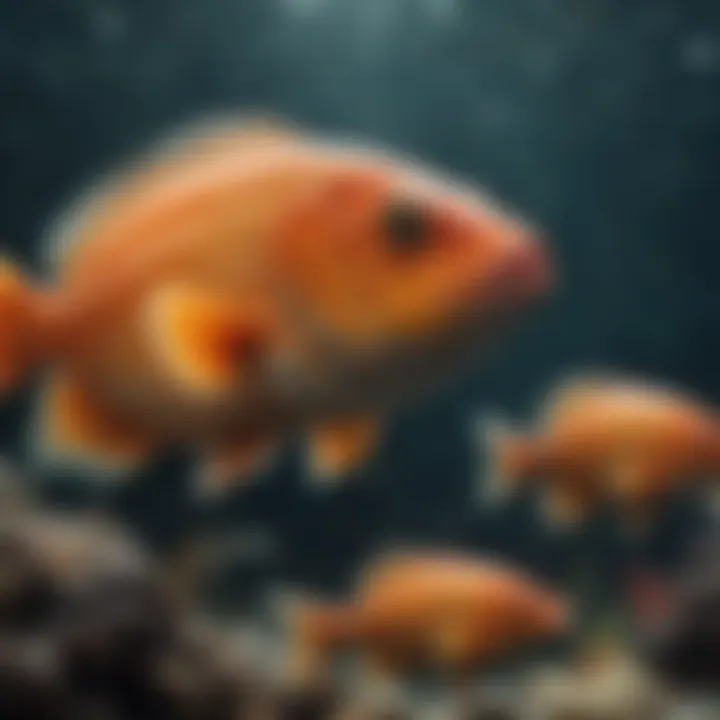
Additionally, increased ocean noise from shipping and climate change can disrupt crucial communication and navigation patterns for these animals. Social behaviors are altered, affecting breeding and overall species health. This creates a cascading effect in their ecosystems, threatening the intricate relationships that many marine mammals have with the species around them.
Amphibious Lifecycles of Sea Turtles
Sea turtles are particularly vulnerable to climate change due to their unique lifecycles. These majestic creatures often return to the very beaches where they were born to lay their eggs. With rising sea levels and increased beach erosion, nesting habitats are threatened. Alongside this, changing sand temperatures could skew sex ratios, as warmer sand yields more female turtles, which could lead to population imbalances.
Moreover, the increasing frequency of extreme weather events could destroy nesting sites, making reproductive success a gamble for these ancient survivors. Therefore, conserving their beaches and the wider marine environments is crucial for ensuring their survival.
Invertebrates: The Unsung Victims
Invertebrates, often flying under the radar in conservation discussions, are among the most affected by climate change. Coral polyps, jellyfish, and mollusks significantly contribute to marine ecosystems yet remain vulnerable to ocean acidification. As CO2 levels rise, the increase in acidity hampers the ability of organisms like shellfish to calcify, limiting their growth and survival.
This disruption holds profound implications for food webs since many marine species, including fish and marine mammals, rely on these invertebrates as a primary food source. Their decline may ripple through various trophic levels, leading to broader ecosystem degradation that can alter marine biodiversity drastically.
Physiological Responses to Climate Change
Understanding the physiological responses of marine life to climate change is crucial for grasping how these organisms adapt—or fail to adapt—to a rapidly shifting environment. When the global climate starts to wobble, marine animals face changing temperatures, pH levels, and oxygen concentrations. These shifts significantly impact their physiology, affecting everything from reproduction to growth rates. If we want to grasp the full hammer blow climate change delivers to marine ecosystems, we need to shine a light on how these species react on a biological level.
Temperature Tolerance in Marine Animals
Temperature changes can make marine environments tick in unexpected ways. For instance, fish like the Atlantic cod show a limit on how much heat they can handle. Studies have shown that rising sea temperatures can lead to decreased aerobic capacity in some species. If the surrounding water gets too warm, these fish can’t just swim all willy-nilly; they might struggle to find food.
For other species, like certain types of coral, temperature increases can spell disaster. Coral bleaching is a well-documented phenomenon that occurs when temperatures rise, leading the corals to expel the symbiotic algae they rely on for energy. Without these algae, the corals lose their color and ultimately their ability to survive. The Great Barrier Reef, for example, has faced bleaching events on an alarming scale that has resulted in significant coral mortality.
"Marine species are facing an unforgiving gauntlet of environmental changes, and those that can't keep pace will fall behind—or worse."
"Marine species are facing an unforgiving gauntlet of environmental changes, and those that can't keep pace will fall behind—or worse."
Effects of Temperature Tolerance on Marine Life:
- Metabolic rates: As temperatures climb, the metabolic rates of many marine species accelerate. This can lead to higher energy demands while food supplies remain stagnant or decrease.
- Reproductive cycles: Both the timing and success rates of reproduction can be adversely affected. Species which traditionally mate in certain seasons may find those timings off-kilter, throwing a wrench into their life cycles.
- Habitat Compression: Species may be forced to shift to cooler waters, which can enhance competition for limited resources with other marine inhabitants.
Acidification Impact on Marine Life
The oceans have absorbed about 30% of human-made carbon dioxide over the last century, and this is resulting in ocean acidification—a worrying trend that changes the chemistry of seawater. This can have dire consequences for marine organisms that build shells or skeletons, like oysters, clams, and some plankton species. As seawater becomes more acidic, it becomes less hospitable for these creatures. The process of forming calcium carbonate shells becomes harder, leading to thinner shells that can be more vulnerable to predation and environmental stressors.
Key Impacts of Ocean Acidification:
- Shell Formation: Studies indicate that low pH levels inhibit the ability of marine invertebrates to calcify properly. This leads to weaker shells and bodies.
- Food Web Disruption: Since many marine species rely on weaker-shelled organisms, the entire food web could get knocked off balance.
- Behavioral Changes: There's evidence that acidified waters can impact the sensory systems of fish, which can affect their behaviors. They might not detect predators as effectively or be unable to locate food sources.
By grasping these two threads—temperature tolerance and acidification—one can begin to appreciate the alarming and intricate tapestry of challenges facing marine life today. If we hold the key to understanding, we might find solutions that ensure the survival of many threatened species.
Behavioral Changes in Marine Species
The phenomenon of climate change has brought about a significant impact on the behaviors of various marine species. Understanding these behavioral changes is crucial, as it offers insight into how marine life adapts to shifting environmental conditions. A closer look at these shifts provides evidential support for the far-reaching consequences of climate change on oceanic ecosystems.
Migration Patterns and Alterations
As temperatures rise and currents shift, many marine species are reconsidering their annual migration routes. For instance, the humpback whale, notorious for traveling thousands of miles from feeding to breeding grounds, is increasingly altering these routes. Warmer waters can lead to changes in prey distribution, forcing these majestic creatures to seek alternative feeding grounds. This change not only affects their feeding habits but also disrupts the ecological balance, as other species, such as krill, may become over-exploited in new areas, leading to mismatches in the food web.
Fish species, such as cod and haddock, are also showing a preference for cooler waters, migrating northward in search of optimal conditions. This shift raises critical questions about the future of commercial fishing industries, as traditional fishing areas may become less productive while new areas are opened up.
- Warmer sea temperatures
- Altered ocean currents
- Shifted prey availability
Other species, like sea turtles, are also subject to disrupted migration patterns, as they rely heavily on specific conditions for nesting and feeding. Incidents of greater incidental catches result from their altered pathways, further complicating their survival.
"The changing climate is not just a problem for individual species; it's a swirling mix of challenges impacting entire oceanic ecosystems."
"The changing climate is not just a problem for individual species; it's a swirling mix of challenges impacting entire oceanic ecosystems."
Changes in Feeding Behavior
Feeding behaviors among marine creatures are shifting alongside their migration patterns. For example, the impacts of acidification and warmer waters can drastically alter the availability and types of prey species. The alteration of marine flora, which is often a food source for many fish and invertebrates, leads to dwindling populations of available prey, compelling predator species to change their feeding habits.
More specifically, researchers have noted that many fish are now feeding at different times of the day. The well-established patterns of diurnal feeding are becoming muddled as species attempt to adapt to changes in prey availability and ocean conditions. This shift in feeding time can have cascading effects on marine food chains; as one species alters its feeding habits, it impacts others, resulting in a complex web of ecological consequences.
Marine mammals, too, are experiencing the repercussions of these alterations. For instance, seals that traditionally prey on certain fish species may find their usual hunting grounds barren, impacting their health and breeding success.
- Unpredictable prey availability
- Shifted feeding activity timing
- Disruption of traditional hunting grounds
In summary, behavioral changes in marine species due to climate change illustrate not only the resilience of these organisms but also the fragility of their ecosystems. As these marine inhabitants adjust to new realities, it becomes increasingly important to monitor and respond to the challenges they face.


Impact on Marine Food Chains
The marine food chain is a delicate web, a complex system where each species plays a crucial role. Changes driven by climate change can ripple through this system, potentially causing cascading effects detrimental to biodiversity and human interests. Climate change poses a real threat to the stability and productivity of marine ecosystems, which serve as the backbone for the ocean's food supply. Understanding these impacts is vital not just for marine life but also for the millions of people who rely on these resources for their livelihoods.
Disruption of Trophic Levels
Trophic levels denote the hierarchical layers in a food chain, with producers like phytoplankton at the base and apex predators like sharks at the top. Climate change disrupts these levels, particularly through ocean warming and acidification. As temperatures rise, many species may move to cooler waters, leading to shifts in predator-prey relationships.
For instance, if fish such as sardines migrate north, this can leave their predators like seals and larger fish hunting for alternative food sources. The result? A mismatch in timing and availability of food occurs that can starve higher level consumers.
This disruption isn’t just about individual species; it ultimately affects entire ecosystems and can lead to decreased biodiversity. Species that depend heavily on specific prey may find it harder to survive, pushing them to the brink of extinction. The knock-on effects can, in many cases, be irreversible.
Effects on Keystone Species
Keystone species, though they may not be the most abundant, play a critical role in maintaining the structure of an ecological community. Think of sea otters and their role in kelp forest ecosystems – with their predation on sea urchins, they maintain kelp populations. When climate change alters ocean temperatures or disrupts food availability, keystone species can struggle to adapt.
For example, the decline of sea otters due to habitat changes or reduced food can lead to a boom in sea urchin populations. This imbalanced growth causes kelp forests to decline, resulting in habitat loss for numerous marine organisms and a breakdown in the ecosystem overall. The disappearance of such species creates a ripple effect, showcasing how integrated marine life truly is in its survival.
Reproductive Challenges
The challenges faced by marine life in terms of reproduction due to climate change is a topic that cannot be overlooked. Reproduction is crucial for the survival of species, and any disruption in these processes could have lasting impacts on marine ecosystems. The threats posed by climate change affect not only the timing of breeding but also the success of offspring from conception to their eventual maturation. Understanding these challenges is essential for grasping the broader effects of climate change on marine biodiversity.
Changes in Breeding Timing
One of the more palpable effects of climate change is the shift in breeding seasons for various marine species. As water temperatures rise, some fish species, for example, begin their spawning earlier in the year. This is notable with species like Pacific herring, which depend on specific temperatures for their reproductive activities. A warmer ocean might stimulate breeding at a time when food supplies have not yet peaked, resulting in a disconnect in the timing of availability of the nutrients needed for fish larvae to thrive.
The impact of changing breeding schedules extends beyond individual species. Ecosystems are finely balanced, and an overall shift in reproductive timing can disrupt prevailing patterns. Coral reefs, known for their synchronized spawning events, may also face significant changes due to temperature fluctuations. The collective spawning of coral species is often synchronous, allowing for a greater chance of fertilization success. If one species spawns out of sync due to temperature changes, it could lead to fewer egg fertilizations and further threaten these vital ecosystems.
- Key factors influencing breeding timing:
- Rising water temperatures
- Alteration in food availability
- Seasonal shifts in currents and tides
Impact of Climate Conditions on Larval Development
The development of marine larvae is susceptible to several climate-related variables, and the consequences can be dire for species survival. Higher ocean temperatures can lead to increased metabolic rates in larvae, impacting their growth and survival rates. Moreover, ocean acidification, a direct result of increased carbon dioxide levels, complicates these challenges further.
Invertebrate larvae, such as those of sea urchins, are particularly vulnerable. Acidic conditions can weaken their shells, which in turn affects their chances of survival as they navigate predatory environments. The delicate balance of reproductive success hinges not only on the timing of spawning but significantly on the environmental conditions that affect larvae in their formative stages.
"The survival of marine species often hangs in the balance during their early life stages; conditions must be just right for them to thrive."
"The survival of marine species often hangs in the balance during their early life stages; conditions must be just right for them to thrive."
- Effects on larval development include:
- Increased mortality rates due to unfavorable conditions
- Delayed growth and developmental abnormalities
- Impacts on genetic divergence and adaptability
In summary, the reproductive challenges posed by climate change are critical, with shifting breeding timings and adverse effects on larval development serving as key areas of concern. Addressing these issues not only contributes to marine conservation efforts but also aids in sustaining the livelihoods of coastal communities that depend on these species.
Ecosystem Services at Risk
As climate change continues to reshape marine ecosystems, the services they provide to human societies are increasingly jeopardized. These ecosystem services are essential components of our planet's health and directly impact our quality of life. They are the benefits we receive from natural environments, ranging from food provision to storm protection. Understanding how climate change affects these services can guide conservation efforts and policy-making.
Disruption of Fisheries
Fisheries are a linchpin for many coastal communities, offering both sustenance and livelihoods. The growing warmth of ocean waters, driven by climate change, leads to shifts in fish populations. Species like cod and haddock, crucial for the fishing industry, are known to migrate toward cooler waters. This shift is not trivial. It disrupts traditional fishing grounds and often forces local fishermen to travel further, increasing costs and reducing catch efficiency.
Moreover, overfishing combined with changing temperatures can exacerbate the decline of certain fish stocks. The situation might worsen if specific species are unable to adapt or migrate at the pace of environmental changes. Reports have indicated an alarming trend in reduced fish sizes, which impacts breeding as larger individuals typically produce more offspring.
"Sustainable practices must be prioritized to ensure that fisheries can recover and thrive amidst these changes."
"Sustainable practices must be prioritized to ensure that fisheries can recover and thrive amidst these changes."
Here are some crucial concerns surrounding fisheries:
- Altered species distribution leading to ecosystem imbalance.
- Increased competition for dwindling resources.
- Higher operational costs for fishermen due to longer travel times.
- Potential conflicts among countries over migration patterns and fishing rights.
Threats to Coastal Protection
Coastal ecosystems, including mangroves and coral reefs, act as nature's buffer against storms and erosion. However, climate change poses a double whammy through rising sea levels and increased storm intensity. Mangroves, for example, not only provide habitat for fish but are also crucial in preventing coastal erosion. When these areas degrade due to pollution, deforestation, or temperature fluctuations, the vulnerability of coastal communities to storm surges increases significantly.
The loss of reefs, accelerated by ocean acidification and bleaching, is another pressing issue. Healthy reefs can absorb about 70% of wave energy, reducing the risk of flooding in coastal settlements. As reefs decline, coastal areas may face a heightened risk of damage during extreme weather events. This situation encapsulates the broader implications of marine degradation, as communities that rely on these natural fortifications find themselves in danger from mother nature’s fury.
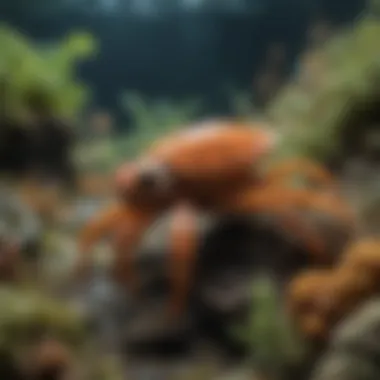
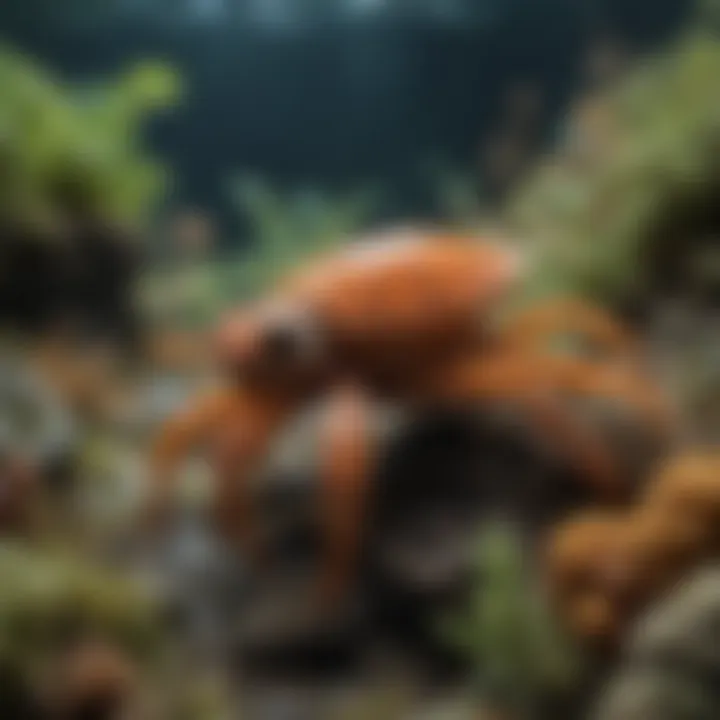
Key considerations about coastal protection include:
- The loss of natural barriers leads to increased flooding and damage during severe weather.
- Economic impacts on tourism and fisheries, industries dependent on healthy marine habitats.
- Challenges in finding alternative methods to replicate natural barrier functions.
As these services come under threat, it emerges starkly clear: protecting marine biodiversity is not just an environmental imperative but a crucial step in safeguarding human life and economic stability. The intertwined nature of human and marine ecosystems highlights the urgent need for innovative solutions and concerted conservation efforts.
Human-Marine Life Interactions
Human interactions with marine life are a crucial element in understanding the delicate balance of marine ecosystems, especially in the face of climate change. As we continue to shift the dynamics of the oceans through fishing, pollution, and coastal development, the consequences can be profound for both marine species and human communities. This section sheds light on the significance of these interactions and how they shape the narrative of our oceans' health.
Impacts on Coastal Communities
Coastal communities are often on the front lines of experiencing the repercussions of climate change, as well as the interactions between humans and marine life. A significant number of people live in these areas, relying heavily on marine resources for their livelihood. Here are some key points to consider:
- Fishing Industry Vulnerability: As fish populations decline due to overfishing and changing habitats, local economies that depend on fishing face dire consequences. Fishermen may find their catch dwindling, leading to financial instability.
- Cultural Ties: Many coastal communities have a rich cultural history tied to the ocean. The changes brought about by climate change not only threaten economic stability but also impact cultural practices and traditions linked to fishing and marine stewardship.
- Health Risks: Increased water temperatures and pollution can lead to harmful algal blooms, posing health risks to both marine creatures and humans through consumption of contaminated seafood.
“The ocean is the lifeblood of coastal communities, providing not only food but also cultural identity and economic opportunity.”
“The ocean is the lifeblood of coastal communities, providing not only food but also cultural identity and economic opportunity.”
All these factors paint a grim picture for those relying on the ocean’s bounty. Understanding this connection is vital in unearthing solutions that can safeguard both marine life and human well-being.
Adaptation Strategies for Sustainable Practices
While the challenges posed by climate change are formidable, adaptation strategies can offer pathways toward sustainability. Engaging in responsible practices can mitigate adverse impacts on marine ecosystems. Below are some strategies:
- Sustainable Fishing Practices: Implementing techniques that prioritize conservation, like catch limits and protected areas, can help replenish fish stocks and maintain biodiversity.
- Community Involvement: Local knowledge and community-led initiatives play a fundamental role in protecting marine resources. Grassroots organizations often lead the way in raising awareness and implementing sustainable practices that resonate with community values.
- Regulatory Frameworks: Governments can enact policies that protect marine habitats and promote cooperative management between stakeholders. This means not only regulating fishing practices but also controlling coastal development that encroaches on critical habitats.
- Education and Outreach: Enhancing awareness of marine life’s plight among community members fosters a sense of responsibility. Educational programs can help instill values that champion sustainable practices and respect for ocean health.
Adapting to the changing dynamics between humans and marine life requires a concerted effort. It is about striking a balance between using the ocean's resources responsibly today while ensuring they remain available for future generations.
Conservation Efforts and Strategies
Conservation efforts are increasingly crucial amid the looming threats posed by climate change on marine ecosystems. The long-term health of our oceans depends on coordinated approaches that preserve biodiversity, manage human activity, and protect vulnerable species. In this section, we delve into key strategies that are currently utilized to address the numerous challenges faced by marine life, focusing on their significance and potential benefits.
Protected Marine Areas
One of the cornerstone strategies in marine conservation is the establishment of Protected Marine Areas (PMAs). These areas serve as safe havens for marine species, allowing ecosystems to thrive without the pressures of fishing, pollution, and habitat destruction. The concept is fairly straightforward yet incredibly impactful: by restricting human activity, it aims to restore and maintain the natural balance within marine environments.
- Benefits of PMAs:
- Biodiversity Conservation: Species that are often threatened, such as certain types of coral and fish populations, can find refuge here, promoting recovery and sustainability.
- Ecosystem Resilience: Healthy marine ecosystems are more capable of withstanding the pressures of climate change, further safeguarding species that might otherwise be on the brink.
- Enhanced Fisheries: Surprisingly, PMAs can also benefit local fisheries by allowing fish populations to grow and flourish, ultimately replenishing stocks that fishermen rely on.
However, these areas must be managed carefully to be effective. Overly restrictive regulations can lead to pushback from local communities whose livelihoods depend on the ocean. Thus, a balance must be struck between conservation objectives and economic realities.
Community Engagement and Awareness
Another critical component of conservation is the engagement of local communities. When communities are involved in conservation efforts, they tend to become stewards of their marine environment. This grassroots approach fosters a sense of ownership, making individuals more likely to prioritize sustainable practices.
- Strategies for Engagement:
- Educational Programs: Programs aimed at raising awareness of climate change’s impact on marine life can inspire proactive behavior. Residents learn about the plight of endangered species and the importance of healthy habitats.
- Inclusive Management: Involving community members in decision-making processes regarding local marine resources can lead to more effective conservation practices. Their insights and traditional knowledge are invaluable in creating tailored strategies.
- Volunteering Opportunities: Local clean-up drives and restoration projects not only improve marine habitats but also build community bonds and awareness of the issues at hand.
Engaging local communities can turn tides in conservation outcomes. When people see the positive impact of their efforts, it reinforces commitment, fostering long-term conservation practices. Together, protected areas and community awareness form a dual strategy that assists in not just preserving marine life, but also in ensuring that future generations inherit a thriving ocean.
"The ocean is our greatest ally in the fight against climate change, and safeguarding it secures a more sustainable future for all."
"The ocean is our greatest ally in the fight against climate change, and safeguarding it secures a more sustainable future for all."
The intersection of human and marine life is complex, and successful conservation approaches must integrate ecological wellness with the needs of coastal inhabitants. By adopting these strategies, we can work toward a more harmonious relationship with our oceans that aligns with the pressing challenges posed by climate change.
Culmination: The Urgency of Addressing Climate Impact on Marine Life
The current state of our oceans serves as a stark reminder of the urgency required in addressing the implications of climate change on marine ecosystems. The health of marine life, an intricate tapestry woven through countless species and natural processes, is now in jeopardy. The importance of understanding and mitigating these effects cannot be overstated.
As we explored throughout the article, disruptions ripple through various marine species, communities, and ecosystems. From the plight of coral reefs, which are the ocean's biodiversity hotspots, to the alarming shifts in fish populations, each thread is vital to the overall health of the marine environment. These impacts not only affect marine life but also have significant ramifications for human populations linked to these ecosystems for sustenance and economic activity.
In considering specific elements of impact, we see how climate change alters breeding and migratory patterns. Marine mammal populations, heavily reliant on stable environments, face staggering challenges that threaten their survival. The acidification of oceans, fueled by rising carbon dioxide levels, jeopardizes the integrity of shells and skeletons in many marine invertebrates, which play a crucial role in the food web.
Benefits of addressing this issue include:
- Enhanced Biodiversity: Taking proactive measures can bolster the resilience of threatened species and support ecosystem recovery.
- Sustainable Fisheries: Implementing adaptive management strategies will promote sustainable fishing practices and maintain fish populations at healthy levels.
- Coastal Protection: Healthy marine ecosystems act as buffers against climate impacts, protecting coastal communities from erosion and extreme weather events.
"Addressing climate change is not merely an environmental concern, but a matter of societal and economic stability."
"Addressing climate change is not merely an environmental concern, but a matter of societal and economic stability."
However, time is not on our side. The urgency lies not just in recognizing these challenges but in taking action—whether through conservation efforts, community engagement, or fostering awareness. Every individual’s efforts can contribute to a larger movement toward sustainable practices. Each step taken toward understanding and adapting to climate change can showcase our commitment to preserving marine ecosystems.



